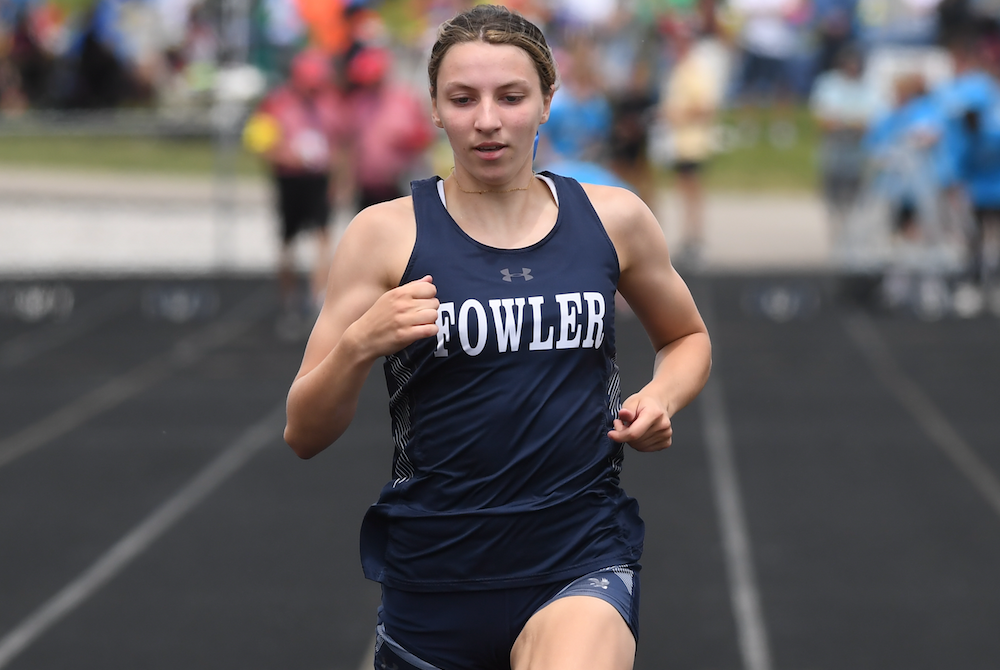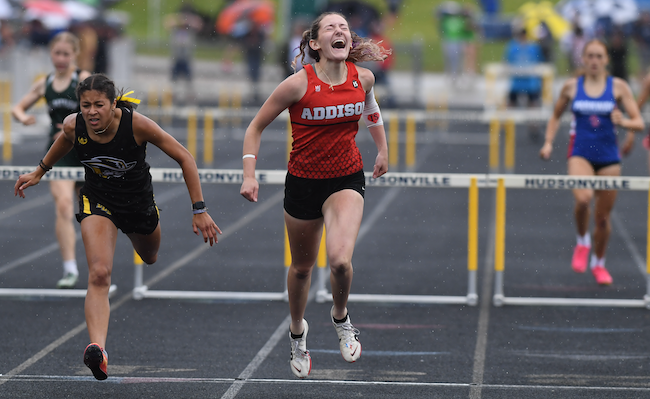
Classes Still Create Hoosier Hysteria
July 27, 2017
By Rob Kaminski
MHSAA benchmarks editor
This is the fourth part in a series on MHSAA tournament classification, past and present, that will be published over the next two weeks. This series originally ran in this spring's edition of MHSAA benchmarks.
Twenty years ago, Bloomington North High School won the Indiana High School Athletic Association boys basketball championship, defeating Delta 75-54 at the RCA Dome in Indianapolis.
The date, March 22, 1997, is at the same time revered and disdained by traditionalists in the state who saw it as the last schoolboy championship game the state would ever host.
That’s how devout the game of basketball, particularly interscholastic basketball, had become in the Hoosier state during the 87 years a state champion – one state champion, to be precise – was crowned.
Following that 1997 season, the IHSAA moved to a four-class system for its roundball tournaments, like so many of its state association counterparts had done years earlier.
It would be shocking to find more than a small percentage of current high school basketball players around the country unfamiliar with the iconic movie Hoosiers, even though the film is now more than 30 years old.
And, the storyline for that blockbuster unfolded more than 30 years prior to its release, when small-town, undermanned Milan High School defeated Muncie Central High School 32-30 in the 1954 IHSAA title game.
Perhaps it’s because of the David vs Goliath notion, or the fame of the movie that replaced Milan with the fictional Hickory and real-life star Bobby Plump with Hollywood hero Jimmy Chitwood, or the simple fact that Indiana had something other states didn’t.
Whatever the reason, plenty of opposition remains to this day to basketball classification in the state.
The fact is, the small rural schools were regularly being beaten handily by the much larger suburban and city schools as the tournament progressed each season.
Small schools also were closing at a rapid rate following the state’s School Reorganization Act in 1959, as students converged on larger, centralized county schools. From 1960 to 2000, the number of schools entering the tournament dropped from 694 to 381, and in 1997 a total of 382 schools and 4,584 athletes began competition at the Sectional level (the first level of the IHSAA Basketball Tournament).
It was at the entry level of the tournament where school administrators felt the pain of the new class system, but not necessarily for the same nostalgic reasons as the fans who either attended or boycotted the tournament.
At the Sectional round of the tournament, the IHSAA was culling just 2 percent of the revenue, with the participating schools splitting the balance. So, when Sectional attendance dropped by 14 percent in that first year of class basketball, many schools realized a financial loss. It was money they had grown to count on in prior years to help fund various aspects of the department.
Schools cumulatively received more than $900,000 from Sectional competition in 1998, but that total was down from more than $1 million in the last year of the single-class tournament.
Yet, the current format provides a great deal more opportunity and realistic chances at championship runs for schools of all enrollments.
To date, 60 additional teams have championship or runner-up trophies on display in school trophy cases around Indiana.
That was the mission in front of then-IHSAA commissioner Bob Gardner (now National Federation executive director) once the board made its decision: to give thousands more student-athletes the opportunity for once-in-a-lifetime experiences.
As any statistician knows, figures can be manipulated to tell any side of a story. Declining attendance in year one of class basketball is such a number.
The truth is tournament attendance had been on a steady downward spiral since its peak of just over 1.5 million in 1962. By the last single-class event in 1997, the total attendance was half that.
The challenge then and today, as it is for all state associations, is to find that delicate balance for those holding onto tradition, those holding onto trophies, and the number of trophies to hand out.
Editor’s Note: Stories from the Fort Wayne Journal Gazette in 1998 and from a 2007 issue of Indianapolis Monthly provided facts in this article.

Fowler Girls Award 1st-Year Coach with Program's 1st Finals Title since 2019
By
Keith Dunlap
Special for MHSAA.com
June 2, 2024
HUDSONVILLE — Sometimes it actually isn’t so hard to replace a legend. Just ask Fowler girls track & field coach Neil Hufnagel.
After last year, Hufnagel took over for longtime Fowler coach Jill Feldpausch, who built the program into a dynasty.
Feldpausch led Fowler to five MHSAA Finals titles from 2011 to 2019, but there was no need for anyone to feel sorry for Hufnagel going into this year.
On the contrary, it might have been the track & field version of inheriting a Fort Knox-sized gold mine.
“She left the cupboards absolutely packed,” he said.
That was evident during the Lower Peninsula Division 4 Finals on Saturday at Baldwin Middle School, where Fowler reigned supreme again with a dominant performance.
Fowler finished with 70.5 points, well ahead of the 44 collected by runner-up Portland St. Patrick.
Fowler had only one first-place event finish, and that was in the last one, taking first in the 1,600 relay in a time of 4:08.44.
But that didn’t end up mattering as Fowler used its depth to score points.
The Eagles, who finished fourth last year, snapped a mini drought by their standards.
“We talked a little bit about being workmanlike,” Hufnagel said. “We know that it doesn’t take first places to finish first in the state. We had some good team depth, and we were able to use that.”
 Saugatuck was third with 34 points.
Saugatuck was third with 34 points.
There were several individual standouts who flanked Fowler’s team victory.
Buckley senior Aiden Harrand, who will run next for Wake Forest, won the 1,600 in a time of 4:53.25 and the 400 in a time of 58.25. Harrand also finished second in the 800.
Between cross country and track, Harrand finished her high school career with 10 Finals championships and showed impressive versatility.
“It’s hard for sure,” Harrand said. “I do a lot of distance training. I have to because I have to be prepared for that mile. I think the speed comes naturally. I do a lot of speed workouts and stuff. But you’ve got to train distance.”
Another individual standout was Addison junior Molly Brown. She repeated in the 100 hurdles in a time of 15.22, and then won the 300 hurdles in a time of 45.07.
Brown was second in the 300 hurdles last year, and she obviously was thrilled to build on that defeat and set up what should be a big senior year in 2025.
“I knew the girl that beat me last year graduated, but I knew that coming in this year, I was going to have to run a really good time to win,” Brown said. “I just really wanted to win.”
In the field events, Marlette senior Olivia Findlay shined the brightest, winning the long jump with a distance of 17-feet, 4½ inches and the high jump in 5 feet, 5 inches.
Other champions included Unionville-Sebewaing sophomore Layla Bolzman in the 100 and 200, Johannesburg-Lewiston junior Allie Nowak in the 800, Whitmore Lake freshman Kaylie Livingston in the 3,200, Chesterfield Austin Catholic senior Lyla Mullins in the shot put and discus and Mason County Eastern junior Payton Haynes in the pole vault. Frankfort (400), Portland St. Patrick (800) and Whitmore Lake (3,200) also won relays. Athens junior Aleyah Deller won the adaptive 100, 200 and shot put events.
PHOTOS (Top) Fowler's Katie Spicer crosses the finish line during a sprint Saturday. (Middle) Addison's Molly Brown, right, finishes her 100 hurdles championship win. (Click for more from Ken Swart/RunMichigan.com.)

